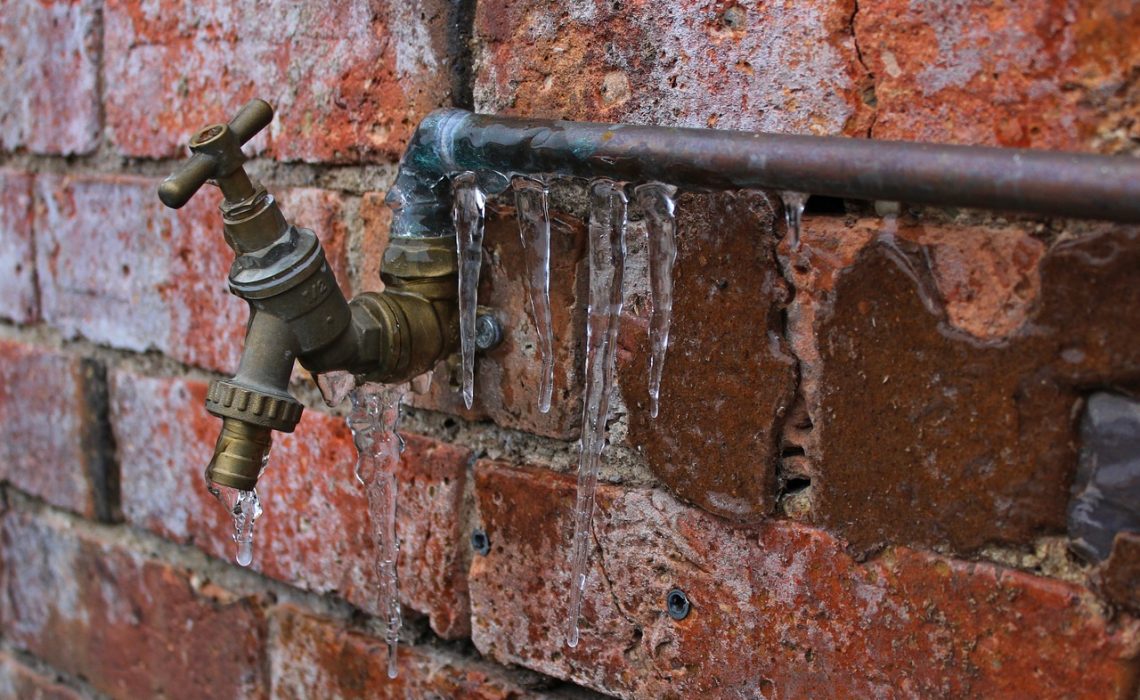
If you are living in an area where the temperature often plummets below the freezing threshold, you might be well aware of the dilemma of frozen pipes. Upon heating, frozen pipes tend to burst to cause property damage during cold climate. The Insurance Institute for Business and Home Safety (IBHS) reports that burst pipes are among the most common causes of property and water damages that can cost thousands of dollars in repairs.
To help you prevent any damages, let’s take a look at why pipes burst and how can you keep it from happening as the temperature drops.
Why do pipes burst?
Water has an anomalous behavior that allows it to expand as it freezes into ice. Unfortunately, water pipes (metal or plastic) follow no such expansion as the temperature goes below the freezing point. This puts most pipes, especially those in unheated spaces, at risk of bursting, causing huge bucks in damages. The good news is there are measures that you can take to prevent pipes from bursting and keep your water running.
Add insulation to exposed pipes:
The simplest thing you can do to prevent your pipes from freezing is to add a layer of insulation to pipes and fixtures. Pipes and faucets in garages, basements, and crawl spaces are exposed to cold and are more likely to freeze if they aren’t properly insulated. There are various types of insulation techniques you can lay your hands on, the most common among them are:
- Foam pipe insulation: These are affordable pieces of foam designed to wrap around and insulate exposed pipes
- Pipe wrap tape: It’s similar to a roll of duct tape that can be wrapped around any exposed area to add a layer of thermal insulation
- DIY insulation: The oldest and simplest method to prevent pipes from freezing is to take old rags or towels and cover any exposed sections of pipes. These come in handy when you have little to no time to get necessary insulation
By equipping exposed pipes and fixtures with a layer of insulation, you can keep them from freezing when the temperature drops.
Replace old pipes:
Age is a key factor in whether a pipe freezes and bursts. Older pipes are more prone to freezing, but it usually comes down to the material used in the pipe. Copper and PVC pipes tend to last roughly 50 to 70 years while the life span for PEX pipes is about 40 years. However, some pipe materials (like PEX tubing) are less likely to expand and burst from ice formation, but they can still freeze.
It is always wise to call a professional plumber and inspect the conditions of water pipes that are nearing their expiration date. A single search for ‘certified plumbers near me’ will pop up the best options for you available in your vicinity. If the pipes need to be replaced, the plumber can timely advise you before you face any issue.
Close the water supply and drain:
It is prudent to shut off your water supply and drain all water out when you are away. Pipes are not likely to burst in cold weathers if there is no water inside the pipes to expand. If the temperatures plummet below the freezing level, you may well drain the water out of the appliances with a water supply. These include a fridge or water heater, especially if they are in a garage or basement.
Apply a heating tape:
Another way to keep water pipes from freezing is to apply a heating tape around them. A heating tape supplies heat to the pipe and keeps it warm in cold weather. Short sections of pipes that are at higher risk for freezing can be protected using the tape. Currently, there are two types of heating tapes that you can use:
- Automatic heating tape: This type of tape comes with an automatic on/off switch and turns on and off when the heat is needed.
- Heating tape with manual switch: The second type of heating tape does not come with an automatic switch and must be plugged when the heat is needed.
Similar to a space heater, these products can be dangerous; so, make sure you follow all the safety procedures.
Let the water run:
Allowing the faucets in your home to drip can prevent pipes from freezing during extremely cold weather. Though it results in some water wastage, it’s always better than replacing a burst pipe. Opening a faucet releases the excessive pressure that is built between the faucet and the ice blockage. You don’t have to drip the water at full pressure, because even the slowest drip can do the job for you. It prevents a pipe from bursting even if the water inside it freezes because there is no excessive pressure inside that can cause the pipe to rupture.
Conclusion:
Frozen or burst pipes are things you definitely don’t want to see when the cold weather strikes. The damage is preventable if you follow the tips mentioned in the article.














